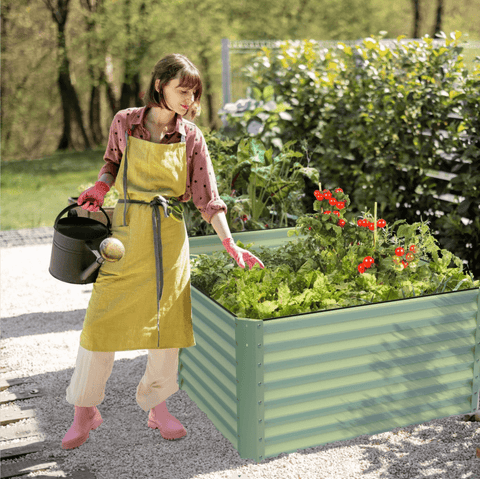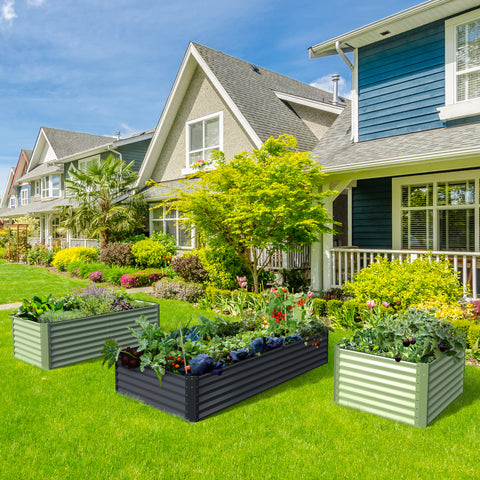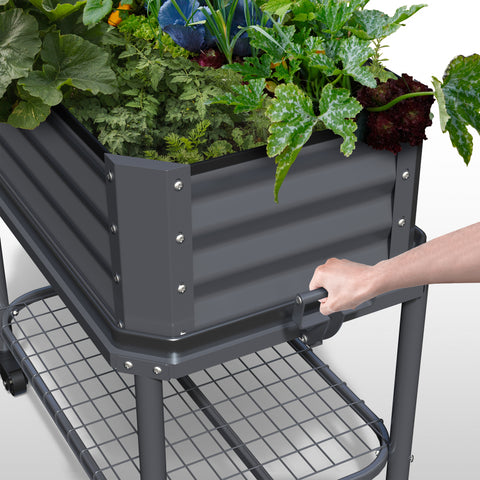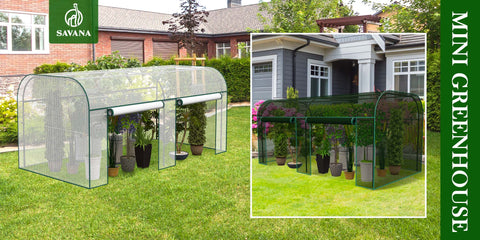Beautiful home gardens add value to your life, your home and your family. But do you know what the basics of gardening are? What is the first step in gardening?The following content also has some reference value for raised garden beds.

This article will guide you,
- Why has gardening become more important?
- What are the needs of plants?
- How to start a garden
So let's get started,
Everyone wants to see a charming green garden every morning, ready for the day and a fresh start in life
Maintaining a beautiful garden is no easy task. But if you are a good garden maintainer, you can get the following advantages of a lovely garden.
Why is gardening becoming more important?
When we talk about "gardening basics and the first steps to gardening," it's good to see why gardening is becoming more and more important. Let's see,
- Great Earth
Your beautiful garden is a gift to the earth, with many benefits such as cost effectiveness, environmental protection, and extremely pure nutrition. However, gardening is becoming the first step on the road to the future of nature. For example, more people are turning to home food gardening this year, given the recent food supply issues related to COVID-19.
Part of this may affect the incentives for fresh food production. Vegetables from organic home gardens are interested in easier access to nutrient-rich, high-quality food, understanding where their food comes from, and support for the environment and national economy of any country.

Beneficial to physical and mental health
However, gardening did not improve the geranium's health. Even a simple step of pruning plants can have significant health benefits.
Planting a garden helps people engage in other habits and activities that promote health. Gardeners are lucky to eat more fruits and vegetables than non-gardeners because home gardeners grow organic food. It is easy to eat foods with higher nutritional content.
Gardening can also reduce stress and improve mental health. Gardening is also a moderate-intensity exercise that can help women live longer, according to a study.
If you have your own piece of land or want to try a completely different approach to gardening and don't have the time, will this very helpful guide give you a better garden? However, one of the essential elements of a beautiful green garden is plants. Here are some basic guides to growing good plants in your garden.
What are the needs of plants? [Gardening Basics]
Looking at the needs and needs of plants is a major factor when we talk about "the basics of gardening and the first steps to gardening."
Different plant types have specific "temperaments" and like different things such as water, sunlight, soil type, etc. Because plants are like humans, some plants like to be warm and sunny, while others like it to be either cool or wet.
It is enjoyable, and meeting the needs of your seedlings requires some creativity to figure out what works better for a particular plant type. However, there are some basic requirements that all plants need. These are all:
Step 1: Sunshine
Plants are fascinating because they absorb the sun's energy and convert it into their tissues through photosynthesis.
Since plants need sunlight to grow, many plants seem to get enough direct sunlight throughout the day, including most fruits and vegetables, as well as flowers.

Step 2: Water
Water is also necessary for plants. Just as a fresh drink can keep you from wilting in the sun, plants rely on good water nearby to keep them growing and safe. In some areas, your garden needs to be watered daily to keep the plants happy.
You'd better keep the water supply in mind. Assuming they are not near your garden space, a way to supply your garden with water. It is necessary to get to the bottom of the water problem. Don't forget, you're always out plowing this summer, and you need water. Keep updated and keep hydrated with your plants.
- Proper nutrition
In order to maintain a healthy life, you need to eat as healthily as possible. Plants also need nutrients, many of which are similar. On larger commercial farms, different nutrients flow through the soil as specific plants grow. This is their cue for new plants through "fertile" soil - the reward of nutrient-rich growth.
However, you can buy a wide variety of phytonutrients online and at your local fertilizer store. But adding organic nutrients is the best way to take care of your plants. Don't forget to add the right amount of nutrients at the right time.
Step 4: Soil
We don't understand it unless we have specialized knowledge or special skills; You can't tell if soil is fertile just by looking at it. Luckily, there are plenty of DIY testing tools that can tell you how acidic or alkaline your soil is. Once you have a test suite, how do you know what's next? In general, the acidity of most plants should be between pH 6.1 and 7.0.
Some plants seem faintly acidic, including rhododendrons and heather. A pH of 5.1 to 6.0 is optimal for these leafy friends. If not, you need to add a little lime. You can also use some lime where the pH is lower than this, as this means it is highly acidic.
In highly acidic garden soil, all these wonderful nutrients dissolve and flow out of the soil. Also, bacteria can't break down organic matter (aka feces) below 4.7, so plants get less food. There are also fewer ways for plants to obtain essential minerals such as phosphorus, manganese and iron. Acidifiers such as sulfur and iron sulfate will add high quality to your plants.
If you live in an urban area, you may also want to test the soil for lead levels, especially if you have small children playing in the garden and rolling around in the mud. In terms of growing vegetables, this is not very beneficial, although according to research, it doesn't help. But really, this is a fundamental security issue. Urban living may expose people to more lead in the soil.
Fortunately, you can also purchase lead test kits online. No matter what form of test kit you buy, make sure you read the instructions for the most reliable results. It sounds like a lot of research to do, but with a few kits and proper nutrition, you can start growing very steadily.
- Garden space
Garden space is one of the main factors to consider when we look at "Gardening Basics and first Steps to gardening."
Gardens come in all shapes and sizes, and the key is to find out what works for you or what doesn't. Gardening doesn't have to be outside; Houseplants can provide the same stress reduction effects as outdoor gardening, and can even enhance indoor air conditioning better.
Houseplant growing is simpler and easier than you might think. Green Spaces offer a better option for those with very little space, even if they get their hands dirty, or those who don't like getting their hands dirty alone. If you grow plants outside and try to choose an area where you can change all these conditions, plant species need sunlight, water, nutrients, and fertile soil.
You can grow plants directly in the soil, which is an easy and inexpensive option. Create raised beds or plant trees in POTS. High beds, which are essentially wide, earth-filled wooden boxes, are usually 6 to 24 inches off the ground. They can be very efficient, but making these beds costs extra materials.

Containers or POTS are great for small areas or beginner gardens because they offer a lot of flexibility. Watering is especially necessary for containers because they dry better than garden beds.
Fortunately, most of these gardens are small, so watering only takes a few minutes. If you live in a small apartment, there are some other ways to make your life more satisfying, such as a beautiful mini fairy garden.
- The growing season
Another useful piece of knowledge is the length of a plant's growing season. It refers to the amount of time each year when temperatures remain above freezing both day and night. Knowing the growing season is especially useful for growing annuals, such as most vegetables in the garden and many flowers that only live one year.
For example, if you want to grow cantaloupes, you'll want to make sure you can find a variety of cantaloupes that can grow to their maximum during your growing season.
- Climate zone
Plants grow better at optimal growth temperatures. Like Goldilocks, the conditions have to be perfect. Knowing your environment will help you decide which plants you want to grow.
In general, this knowledge can be applied to seeds and plants purchased online to determine which works best. To understand the climate properly, familiarize yourself with areas rich in plant resources. They focus on the coldest winter temperatures, which will help you decide which plants are likely to grow better in a given area.
The U.S. Department of Agriculture provides this helpful map showing which plants are most likely to thrive in certain areas of the United States. This knowledge is especially helpful for growing perennials. Plants like trees, shrubs, and some flowers can survive for a long time because the winter temperatures are always the coldest, determining where these plants can grow.

How to Start a Garden - The Basics of Gardening [Video explained]
conclusion
As gardening basics and the first step in gardening, you now have some understanding of the basic requirements of plants. So don't wait to start your work on creating a green and beautiful space in your home garden.
Start today to achieve a great healthy lifestyle that provides a sustainable environment for the whole world.
Bottom line
So, I hope you have a clear idea of the 7 Basics of Gardening & First Steps









